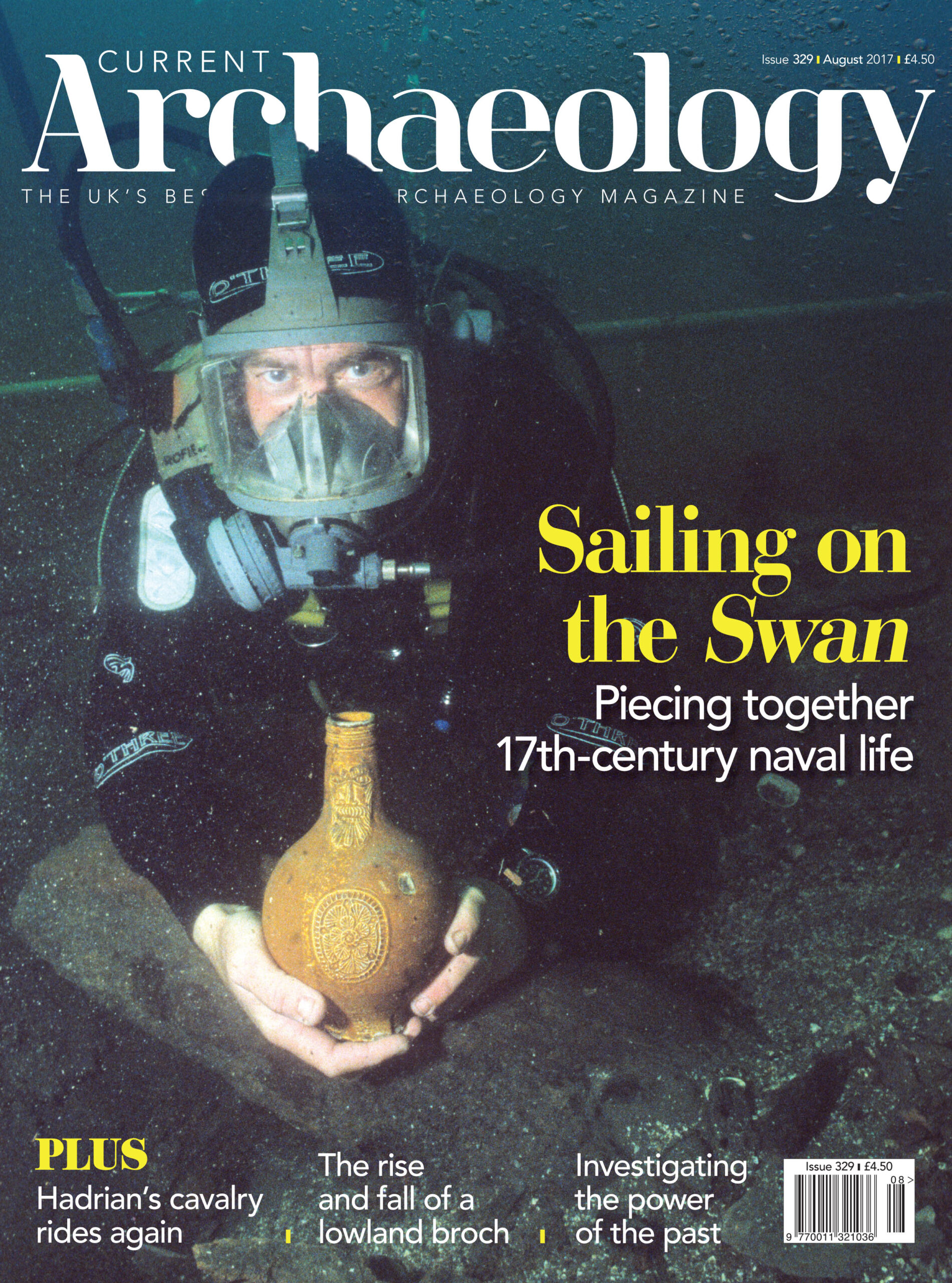To step into Harmondsworth Barn is not just to enter a space so glorious that it was lauded as the ‘cathedral of Middlesex’ by Sir John Betjeman. It is also to experience a remarkably intact medieval interior. Among majestic oak trusses are opportunities to admire medieval technology that has weathered the centuries unaltered. After being rescued from neglect in 2014, though, the barn is facing an uncertain future once more. We tell its story.
Shipwrecks are another place where unexpected insights into past technology can be gained. In our cover story we explore a case in point: the Swan, a small warship wrecked in 1653. Finds reveal how its crew plundered their way up the Scottish coastline, while Davy Jones’s locker has even surrendered a 350-year-old industrial secret.
Surprising finds can also turn up on dry land, of course, and excavations at Leckie, near Stirling, provide a snapshot of life in a Scottish broch on the eve of not one, but two Roman invasions. While the most conspicuous marker of the army’s passing in the 1st century AD was an influx of fancy gifts, the 2nd century brought violent demolition. Neither approach secured peace.
Despite the power of such destruction to shape the archaeological record, today we usually see heritage sites as a point of calm in an increasingly frenetic world. Can therapeutic archaeology use the relics of our past to help mend the present?
Matt Symonds
IN THIS ISSUE:/n
FEATURES/n
THE CATHEDRAL OF MIDDLESEX/n
Exploring Harmondsworth Great Barn
Built in 1426, Harmondsworth Great Barn is an impressive survival, with all its mighty oak trusses still intact. Now the recently restored structure is under threat from plans to expand Heathrow, what challenges confront the conservationists?
DISCOVERIES FROM THE DEEP/n
Sailing aboard the Swan in the 17th century
What can a shipwreck reveal about technological advances in weaponry, food sources for Cromwellian troops, and a sailor’s life at sea? We examine the small warship the Swan, lost off Scotland’s west coast in 1653.
BROCHS AND THE EMPIRE/n
The rise and fall of Leckie
In the 1st and 2nd centuries AD, the Leckie broch faced changing fortunes as Rome sought to conquer southern Scotland. The newly published results of excavations carried out at the site in the 1970s give a glimpse of everyday life in and the Empire’s impact on the stronghold.
THERAPEUTIC ARCHAEOLOGY/n
Human Henge • Life in ancient landscapes
How can archaeology affect our wellbeing? Two experiments highlight the beneficial relationship between ancient landscapes and modern life.
HADRIAN’S CAVALRY/n
Telling the stories of Rome’s riders
A new exhibition spanning ten sites along Hadrian’s Wall explores the crucial role of Rome’s cavalry both on and off the battlefield. Artefacts from across the Empire provide an insight into the diversity of the soldiers and their origins.
NEWS/n
Excavating a Dublin apothecary; Workers’ camp for Silbury Hill found?; Osborne’s new golden age; Neolithic monument found at Newbold; Reconstructing the Mary Rose crew; Bamburgh’s beautiful bird; Unpicking the Leominster hoard; Wookey Hole’s witch marks revealed; Radiocarbon results for community fund; Finds tray
SPECIAL REPORT/n
Luxury living in Roman Chichester
REGULARS/n
Comment
Joe Flatman excavates theCAarchive
Context
Excavating the former grandstand of a Merseyside racecourse
Reviews
Romans and Barbarians beyond the Frontiers; A Celtic Feast; Woodland in the Neolithic of Northern Europe; Crossing Boundaries; Offa’s Dyke; The Oxford Handbook of Archaeological Ceramic Analysis
Museum
Bronze Age life at Must Farm and Flag Fen
Festival of Archaeology
Ideas for how you can take part in this year’s celebration of all things archaeological
Sherds
Chris Catling’s irreverent take onheritage issues
Odd Socs
Rhydymwyn Valley History Society

